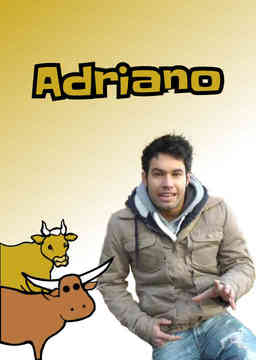









Difficulty:
 Adv-Intermediate
Adv-Intermediate
Italy Sicilian
Giuseppe Pitrè loved attending performances of chivalric folk plays in Palermo. This segment follows a marionette player at Palermo's Opera dei Pupi, the same theater where Pitrè went to see folk epics.
Difficulty:
 Adv-Intermediate
Adv-Intermediate
Italy Sicilian
A woman performs a traditional Sicilian ritual involving the sticking of pins into an onion, accompanied by prayers, in order to bring back the boyfriend of her suppliant.
Difficulty:
 Adv-Intermediate
Adv-Intermediate
Italy Sicilian
Giuseppe Pitrè received his degree in medicine in 1865. His patients, among Palermo's poorest, provided him with a wealth of ethnographic material.
Difficulty:
 Adv-Intermediate
Adv-Intermediate
Italy Sicilian
The segment concentrates on the richness of the Sicilian dialect, a dialect which is less and less spoken. The narrator interviews two poets who recite their works in Sicilian, providing insights into the language.
Difficulty:
 Adv-Intermediate
Adv-Intermediate
Italy Sicilian
Saint Rosalia (1130–1166), recognized by her crown of roses, is Palermo's patron saint. The video shows the July 14 parade in honor of the saint, and a young man who credits his cure from a grave illness to Saint Rosalia.
Difficulty:
 Adv-Intermediate
Adv-Intermediate
Italy Sicilian
Pitrè's mission was to conserve and safeguard the traditions of his people, the Sicilians, and to keep the roots alive. Looking at religious traditions is one important way to do this.
Difficulty:
 Adv-Intermediate
Adv-Intermediate
Italy Sicilian
This segment focuses on an actor who retells and acts out stories from Sicily's past, speaking in Sicilian dialect. He uses the Pitrè Museum as a source for material. The museum houses a manuscript with over 4,000 Sicilian proverbs, just one of the many volumes of Sicilian ethnographic material.
Difficulty:
 Adv-Intermediate
Adv-Intermediate
Italy Sicilian
Pitrè's life was marked by a sort of travelling storyteller tradition in his family. In those days, a cuntastorie (storyteller) would go around to all the piazzas and tell stories, and people would pay to hear them.
Difficulty:
 Adv-Intermediate
Adv-Intermediate
Italy Sicilian
In this segment, we see some swordfish harpoon fishing, and hear an old Sicilian legend about a boy named Nicola who could stay underwater for a very long time.
Difficulty:
 Adv-Intermediate
Adv-Intermediate
Italy Sicilian
We learn about Pitrè's life, and his relationship to the sea.
Difficulty:
 Adv-Intermediate
Adv-Intermediate
Italy Sicilian
Giuseppe Pitrè was an ethnologist who collected documents pertaining to Sicily and its culture and traditions. His work is the basis for this documentary, which unites live footage, drawings, and archival documents.
Difficulty:
 Advanced
Advanced
Italy
As the credits role in this final segment, we hear a song written and performed by Fabrizio De André (together with Massimo Bubola. Una storia sbagliata (a story all wrong) was commissioned for a 1980 TV show about Pasolini's death, called Dietro il processo (behind the trial). You can hear the entire song here, while here you'll find the complete lyrics in Italian.
Difficulty:
 Advanced
Advanced
Italy
Pier Paolo Pasolini discusses the effects Fascism had on Italy. He talks about the city of Sabaudia, built by the fascist government on the reclaimed marshland of the ancient Pontine Marshes (Agro Pontino) and how later, what took hold was the culture of consumerism.
Difficulty:
 Advanced
Advanced
Italy
Pasolini talks about the gates to the city of Orte. They may be simple, and built by unnamed men, but that doesn't mean they don't have value to protect. He moves on to talk about Sabaudia, a city built by the fascist regime, on reclaimed marshland, roughly halfway between Rome and Naples.
Difficulty:
 Advanced
Advanced
Italy
Pasolini explains the difficulty of framing a city through the lens, only for it to be ruined by modern buildings that seem to have nothing to do with the form of the city itself. He wants anonymous, simple poetry to be preserved just like the works of Dante and Petrarca.
Are you sure you want to delete this comment? You will not be able to recover it.